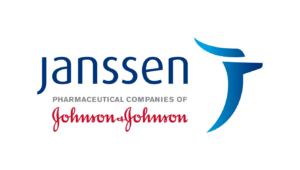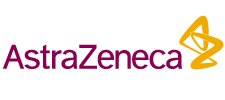
CANNT 2021 VIRTUAL CONFERENCE SERIES
The CANNT Virtual Conference Series will take place October 19 – Dec 2, 2021 every Tuesday and Thursday from 2:30-3:30 PM ET and repeated at 6:30-7:30 PM ET * to maximize attendance opportunities.
All Thursday Industry webinars are complimentary to all! Attend entire series and you could receive up to 11 Continuous Learning Credits!
* all sessions may not be repeated – see schedule belowRegistration Rates
| CANNT Member | Complimentary |
| Non-Member – Full Series | $125.00 + HST |
| Non-Member – Per Day Rate Register for Full Series and save $10.00 | $30.00 + HST |
Only CANNT Members will have access to recorded sessions post virtual series. Register as a member and receive entire virtual series complimentary! That’s a $45.00 savings!
UP NEXT
Tuesday, November 16, 2021
Presenters:
Samantha Rahaman, MSW, RSW, Nephrology Program, Humber River Hospital, Toronto, Ontario, Canada
Alison F. Rowe, BA Hons, MSW, RSW, University Health Network, Toronto, Ontario, Canada
Abstract
Authors:
Samantha Rahaman, MSW, RSW1
Alison F. Rowe, BA Hons, MSW, RSW3
Zheng Jing Hu, MSc2
Blessymol Kalathiparambil, BSN, RN, CNeph(C)1
Jing Qiong Chen, BScN, RN, MN, CNeph(C)1
1Nephrology Program, Humber River Hospital, Toronto, Ontario, Canada
2Department of Health Research Methods, Evidence and Impact, McMaster University, Hamilton, Ontario, Canada
3 University Health Network, Toronto, Ontario, Canada.
Numerous crisis intervention programs have been developed to train healthcare providers to appropriately respond to patients presenting with assaultive behaviours. Nevertheless, one has not yet been adapted to be both population- and setting-specific. To address this knowledge gap, we explored the efficacy of training staff using live modules of crisis scenario re-enactments in improving their ability and confidence to manage patients presenting in crisis at an in-centre hemodialysis unit. These modules were adapted from true patient-provider scenarios and highlighted various patient and staff safety concerns within the unit. The training is informed by the crisis development theory, verbal de-escalation, and simulation-based learning.
In total, 104 multidisciplinary hemodialysis staff participated in a standardized 30-minute training module facilitated by renal social workers. After viewing the pre-filmed re-enacted scenarios, facilitators analyzed patient-staff interactions, provided various de-escalation strategies and resources, and facilitated interactive discussions of the material.
Pre and post questionnaires were administered to measure knowledge, attitude, and comfort level of utilizing de-escalation techniques. We developed a logical model to facilitate the training and communication among the staff. A manual was developed to ensure all sessions were delivered consistently. All staff members were well informed about training sessions, 76% of staff members attended, and staff reported high satisfaction with the program. Most crisis management indicators showed statistically significant improvements between pre-training and post-training, indicating the efficacy of these modules in training healthcare professionals to appropriately de-escalate patient crises and avert negative outcomes. A follow-up survey will be conducted in September 2021.
Presenters
Jill Hidalgo, BSN, RN, CNeph(C), Providence Health Care, Vancouver, BC
Christine Watson, BSN, RN, CNeph(C), Providence Health Care, Vancouver, BC
Leilani Borja, BSN, RN, CNeph(C), Providence Health Care, Vancouver, BC
Tanya Choy, BSc, RD, CDE, Providence Health Care, Vancouver, BC
Prachi Khanna, Providence Health Care, Vancouver, BC
Abstract
Authors
Jill Hidalgo, BSN, RN, CNeph(C)
Christine Watson, BSN, RN1
Leilani Borja, BSN, RN, CNeph(C)1
Tanya Choy, BSc, RD, CDE1
Prachi Khanna1,2
1Providence Health Care, Vancouver, British Columbia, Canada
2University of British Columbia, Vancouver, British Columbia, Canada
Pre-dialysis education plays a key role in helping patients adjust to their kidney disease. Education programs are designed by clinicians with the goal to address patient needs. However, little evidence shows patient involvement in the development of effective educational programs for new hemodialysis (HD) patients. The objectives of this study, located at St. Paul’s Hospital (SPH) Incentre Hemodialysis unit, were (i) to investigate the educational needs of patients from their point of view, and (ii) to obtain patient and clinician perspectives on facilitators and inhibitors of implementing a structured education program to promote self-management in new hemodialysis patients. Patients and nurse clinicians participated in interviews and focus groups. The data analysis was done using the interpretive description approach. Several learning needs were expressed by the patients interviewed— information about kidney disease, how the HD machine works, possible complications that can occur during and post treatment, explanations on medications given and procedures, in addition to results of blood tests taken during their treatments. Clinicians felt that competing nurse responsibilities and short staffing prevented them from providing effective patient education. They recognize that education should be tailored to patient learning needs. In conclusion, these findings strongly indicate that the current state of patient education for new HD patients at SPH is inadequate. Identified themes will assist the health care team to better support hemodialysis patients with their learning needs and promote self-management. These insights lay the groundwork to the development of a structured and tailored education program for new patients.
Thursday, November 18, 2020
Presenters:
Charlene Salmon, NP, Windsor Regional Hospital, Windsor ON
Learning Objectives:
- Discuss optimal therapies that prevent or slow the progression of kidney disease and the need for dialysis in patients with Type 2 Diabetes
- Review the safe integration of SGLTi inhibitors in appropriate patients in your practice
- Recognize the impact of homelessness and mental health issues as barriers to the delivery of care in patients who have T2DM and high renal/cardiac risk
Tuesday, November 23, 2021
Presenter:
Danielle E. Fox, RN, MN, Department of Community Health Sciences, Cumming School of Medicine, University of Calgary, Calgary, AB, Canada
Nancy Verdin, BScOT(ret), PaCER, patient partner, Patient and Community Engagement Research (PaCER) Program, O’Brien Institute for Public Health, University of Calgary, Calgary, AB, Canada
Abstract
Authors:
Danielle E. Fox1 , RN, MN
Nancy Verdin2, BScOT(ret), PaCER, patient partner
David J. T. Campbell1,3, MD, PhD, FRCPC
Kathryn King-Shier1,4, RN, PhD, FESC
Pietro Ravani1,3, MD, PhD, FRCPC
Robert R. Quinn1,3, MD, PhD, FRCPC
1Department of Community Health Sciences, Cumming School of Medicine, University of Calgary, Calgary, AB, Canada
2Patient and Community Engagement Research (PaCER) Program, O’Brien Institute for Public Health, University of Calgary, Calgary, AB, Canada
3Department of Medicine, Cumming School of Medicine, University of Calgary, Calgary, AB, Canada
4Faculty of Nursing, University of Calgary, Calgary, AB, Canada
Purpose: As the prevalence of chronic kidney disease rises, many Canadians will progress to kidney failure and will start dialysis. Home dialysis is promoted in Canada as it is cost-effective compared to in-centre dialysis therapies. Home dialysis can be challenging as individuals must learn to perform a complex procedure while also managing other factors related to their kidney failure and its associated comorbidities. A person-centered approach to care is required to adequately support someone on home dialysis, as challenges will vary based on the unique characteristics and experiences of the individual. Unfortunately, little is known about how to effectively deliver person-centered home dialysis care.
Description: We performed a narrative review of the literature pertaining to person-centered care (PCC) and identified key components of delivering it in the context of home dialysis.
Evaluation: The dimensions of PCC varied between the theories and frameworks presented, but a multi-faceted approach was universally regarded as a foundational element. The integration of individual perspectives, values, and the needs of all stakeholders was integral to success but was often difficult to achieve due to a multitude of barriers. PCC in the context of home dialysis was not well-studied.
Implications: The implementation of person-centered home dialysis care may address many challenges faced by individuals on home dialysis and may be an important model of care for kidney programs. We plan to implement a collaborative research approach to understand and develop person-centered home dialysis care in Canada.
Presenters
Jarrin D. Penny, BSN, RN, CNeph(C), PhD Candidate1,2 – Research Associate, Lilibeth Caberto Kidney Clinical Research Unit, London Health; Sciences Centre, London, ON, Department of Medical Biophysics, Western University, London, ON
Abstract
Authors:
Jarrin D. Penny, BSN, RN, CNeph(C), PhD Candidate1,2 – Research Associate
Patricia Jarosz, MMASc1 – Clinical Research Coordinator
Christopher W. McIntyre, MD, PhD1,2,3
1Lilibeth Caberto Kidney Clinical Research Unit, London Health Sciences Centre, London, ON
2Department of Medical Biophysics, Western University, London, ON
3Department of Medicine – Division of Nephrology, London Health Sciences Centre, London, ON
Purpose: Current hemodialysis (HD) treatments have limited ability to clear larger molecular weight uremic toxins. Retention is associated with increased symptom burden, low health-related quality of life (HR-QOL) and high mortality. Improved clearance, using novel medium cut-off dialyzers, known as expanded dialysis (HDx) may be associated with improved HR-QOL. The London Evaluation of Illness (LEVIL), a dynamic patient reported outcome measure instrument allows iterative recordings to understand overall burden of disease and assess the impact of therapy.
Methods: Initial study consisting of two-week observation (baseline with high flux membrane), followed by 12-weeks HDx therapy (Theranova-Baxter). HR-QOL was assessed using dynamic PROM LEVIL instrument thrice weekly. Extension phase – two-week baseline with 24-weeks HDx and eight-week wash-out. Principal aim was to establish if HDx therapy was associated with changes in HR-QOL utilizing LEVIL.
Results: Patients with lower LEVIL scores (<70/100) at baseline showed improvement in overall HR-QOL after eight-weeks of therapy. General wellbeing, energy and sleep quality were improved significantly as a consequence of HDx therapy. There were no detrimental effects in patients with higher baseline HR-QOL.
Conclusion: Dynamic PROM assessment effectively identified patients with lower HR-QOL and higher symptom burden, demonstrating durable time/dose-dependent improvements across a range of symptom domains.
Implications for nephrology care: Improving HR-QOL in the HD population is an essential priority from a patient experience perspective and as a surrogate for longer term outcomes. Additionally, the ability to systematically identify patients that may benefit from therapy in a constrained healthcare system is paramount.
Thursday, November 25, 2021
Presented by Dr Louis Girard
Objectives:
- Discuss the Importance of Assessing Renal Function and (Kidney) Damage; Discuss the KDGO Heat Map;
- Provide an Overview of the Evolution of CKD Management;
- Review SGLT2i therapy and the benefits to CKD patients, with or without T2DM;
- Discuss the role of other novel agents in the management of CKD with T2DM
Presented by Daniel Schwartz, Medical Director, Fraser Health Renal Program; Program Lead, Fraser Health Peritoneal Dialysis Program
Objectives:
- Understand the latest data regarding nephroprotection with RAAS inhibitors & SGLT2 inhibitors in patients with and without diabetes
- Recognize the indications for discontinuation & restarting of RAAS inhibitors & SGLT2 inhibitors in patients with CKD
- Risk stratification in CKD
- Review practical tips in managing your patients with CKD
Tuesday, November 30, 2021
Thursday, December 2, 2021
Presenter:
Dr Derek Benjamin, Chief of Medicine, Royal Victoria Hospital
Program Overview
Hyperkalemia is highly prevalent and associated with severe adverse outcomes including mortality. Pragmatic, evidenced-based strategies to manage hyperkalemia are critical for patients who are receiving treatments for CKD and HF that may trigger or exacerbate hyperkalemia. The risk of hyperkalemia can be mitigated through dietary potassium restriction, RAASi dose reduction/discontinuation and increasing excretion with diuretics or potassium binding therapies. Management of hyperkalemia, including by nurses who play a pivotal role coordinating care, can enable more optimal care of patients with life-saving therapies.
Program Objectives
The objectives of the webinar are to:
- Increase awareness of the risk factors and clinical consequences of hyperkalemia
- Enhance knowledge of best practices to optimize management of hyperkalemia, newer potassium binders & patient education tips
- Foster communication between the multidisciplinary team that manages patients with hyperkalemia
PREVIOUS SESSIONS IN THE SERIES
PRE-CONFERENCE WORKSHOP: Thursday, October 14, 2021 – Sponsored by Janssen Inc.
- Provide awareness of the diverse needs of patients within Scarborough; specifically our Chronic Kidney Disease Patients
- Outline approaches to care that strive to meet the diverse needs of patients/families
- Highlight initiatives that seek to improve patient outcomes given population diversity
- Outline further support needs to further develop opportunities for enhanced access to service, health equity and improved patient outcomes.
Tuesday, October 19, 2021
Presenters:
Patty Quinan, MN, RN, CNeph(C), Vascular Access Coordinator, Humber River Hospital, Toronto, Ontario, Canada
Dr. Allan Yee, MD, FRCPC, Vascular/Interventional Radiologist, Humber River Hospital, Toronto, Ontario, Canada
Balraj Panesar, Data Integrity Analyst, Medical Imaging, Humber River Hospital, Toronto, Ontario, Canada
Abstract
Authors:
Patty Quinan, MN, RN, CNeph(C), Vascular Access Coordinator1
Dr. Allan Yee, MD, FRCPC, Vascular/Interventional Radiologist1
Balraj Panesar, Data Integrity Analyst, Medical Imaging1
1Humber River Hospital, Toronto, Ontario, Canada
Purpose of the project: Preservation of arteriovenous (AV) access is key to avoiding central venous catheter placement. Central venous catheters have been associated with complications such as infection, thrombosis and central vein stenosis which can limit future vascular access options. We describe percutaneous thrombolysis with overnight systemic thrombolysis to treat clotted AV accesses (fistulae and grafts).
Description: An environmental scan in Canada identified that the majority of nephrology programs perform a combination of percutaneous and surgical procedures, without overnight thrombolysis.
Our percutaneous treatment of thrombosed AV accesses includes duplex ultrasound to identify extent of thrombus; request inpatient bed; fistulogram and angioplasty with pharmacological and mechanical thrombolysis; overnight systemic thrombolysis (suitability determined by the interventional radiologist); and fistulogram with/without angioplasty the following day to determine patency.
Evaluation/Outcomes: Thrombolysis data from January 2015 to May 2021 (77 months) identified 128 cases (average 1.6 per month). Seven cases did not undergo a procedure (unsuitable/patient refusal) and were excluded from the data. Of the 121 cases remaining, 75 (65%) were successful; 29 (24%) underwent overnight systemic thrombolysis (22 (76%) successful and 7 (24%) unsuccessful); and 17 (14%) were deemed not salvageable by the interventional radiologist (multiple procedures, age of access, aneurysms, and failed surgeries). Adverse events were observed in two cases (1.7%); urticaria and angioedema (1), and oxygen desaturation (1). Inpatient beds unavailable 20% of the time, however this did not lead to AV access loss.
Implications for nephrology practice/education: Our unique approach with overnight systemic thrombolysis for the treatment of thrombosed AV accesses may be considered by other programs as a strategy to improve AV access patency.
Presenters:
Gerard K. Barlow, RN, MN, CNeph(c), Clinical Educator, Hemodialysis, Unity Health Toronto, Toronto, Ontario, Canada
Fiona Harrington, RN, Clinical Leader Manager, Hemodialysis, Unity Health Toronto, Toronto, Ontario, Canada
Kathleen McIntosh, RN, MN, Vascular Access Nurse, Hemodialysis, Unity Health Toronto, Toronto, Ontario, Canada
Sadie Webster, RN, Vascular Access Nurse, Hemodialysis, Unity Health Toronto, Toronto, Ontario, Canada
Abstract
Authors:
Gerard K. Barlow, RN1, MN, CNeph(c) – Clinical Educator
Fiona A. Harrington, RN1, MN – Clinical Leader Manager
Kathleen McIntosh, RN1 – Vascular Access Nurse
Sadie Webster, RN1 – Vascular Access Nurse
1Kidney & Metabolism Program, Hemodialysis Unit, Unity Health Toronto, Toronto, Ontario, Canada
Purpose of the project: Infections are common complications among patients on chronic hemodialysis. Patients with a hemodialysis central venous catheter (CVC) are two to three times more at risk of increased hospitalizations for infection and death compared to patients with an arteriovenous fistula or graft (Miller et al., 2016; Farrington & Allon, 2019).
In the spring of 2020, the vascular access team noticed an unexplained increase in dialysis central catheter-related bloodstream infections (CRBSIs) from 0.20 to 0.81 per 1000 catheter days. Many of these infections were noted several days post interventional radiology insertion.
Description: The aim of this project was to identify the cause of our increased rates and develop solutions to address this problem. Using a ‘Plan, Do, Study, Act’ methodology, each step of the process was reviewed. This included: hand hygiene, vascular access insertion, care and maintenance audits, cleansing agents, dressings, CVC cuff exposure practices, engagement of stakeholders, and current best practices.
Evaluation and Outcomes: A multifaceted approach to this problem was implemented which included a review of basic catheter care, standardized education including changes to our protocol and procedures, and innovation in this vulnerable patient population. The overall outcome was a reduction in line infection rates to 0.18 cases per 1000 catheter days.
Implications for nephrology practice/education: It was evident through this quality improvement initiative, that surveillance programs require dedicated teams and resources which closely monitor CRBSI rates, continuously monitor for improvement opportunities, standardization and engagement of both staff and patients in prevention and management of CRBSIs.
References:
Farrington, C. & Allon, M., 2019. Complications of hemodialysis catheter bloodstream infections: Impact of infecting organism. American Journal of Nephrology, 50, 126-132.
https://www.karger.com/Article/Pdf/501357
Miller, L., Clark, E., Dipchand, C., Hiremath, S., Kappel, J., Kiaii, M., Lok, C., Luscombe, R., Moist, L., Oliver, & O., MacRae, J. (2016). Hemodialysis tunneled catheter-related infections. Canadian Journal of Kidney Health and Disease, 3, 1-11.
https://www.ncbi.nlm.nih.gov/pmc/articles/PMC5332080/pdf/10.1177_2054358116669129.pdf
Thursday, October 21, 2021
Presenter:
Dr. Robert Ting, Staff Nephrology/Internist, Scarborough Health Network
Alison Thomas, RN (EC), MN, CNeph(C), Hemodialysis Nurse Practitioner, Unity Health Toronto, St. Michael’s Hospital
Overview:
Hyperphosphatemia in advanced CKD is associated with increased risk of morbidity and mortality. Patients should be educated on dietary restriction of phosphate, with special attention on avoidance of high-phosphorus food additives. However, phosphate-binding agents are necessary in most patients with advanced CKD. Importantly, patients are best managed when the multidisciplinary team participates in their care, of which nurses play a pivotal role coordinating care.
In this presentation, a nurse practitioner and a nephrologist will discuss best practices and optimal approaches for the management and education of CKD patients with hyperphosphatemia.
Program Objectives
The objectives of the webinar are to:
- Increase awareness of the consequences of hyperphosphatemia
- Enhance knowledge of best practices to optimize management of hyperphosphatemia
- Foster communication between the multidisciplinary team that manages patients with hyperphosphatemia
Tuesday, October 26, 2021
Presenters:
Marjan Kasirlou1, RN, BScN, MBA, Home Dialysis Coordinator, Humber River Hospital
Abstract:
Marjan Kasirlou1, RN, BScN, MBA, Home Dialysis Coordinator, Humber River Hospital
Zahra Rajaeiramsheh1, RN, BScN, Dialysis Nurse, Humber River Hospital
Vlad Padure1, MScN, NP-PHC, MBA, Nephrology Program Director, Humber River Hospital
1Department of Nephrology, Humber River Hospital, Toronto, Ontario, Canada
Purpose: Considering growing population of seniors with multiple comorbidities in long-term care (LTC), we expect an increase in population of dialysis patients. The provision of dialysis in LTC is effective and economic model (Beaudry, 2018; Hager, 2019; Klarenbach, 2014; Pierratos 2016).
Methods: Microsimulation cost analysis used calculating cost of dialysis in LTC-HD. Study performed on cohort of dialysis patients residing in LTC (Nov 2020-April 2021). Two types of dialysis machines and modality selected as per feasibility. 12 patients on short daily dialysis (SDD) (833 patient-day) using NxStage and 14 patients on conventional (613 patient-day).
Results: Cost of dialysis in LTC calculated based on patient-day for supplies and caregiver.
Supplies per day on conventional dialysis cost 49 whereas 168 on SDD. The caregiver cost per treatment for conventional and SDD is 158 and 178 respectively. Overall 315,629 spend on caregivers in LTC.
Transportation cost evaluated for the same period and population. Considering these patients received ICHD, the healthcare would incurred 252,327 for transportation. The LTC-HD demonstrated cost saving on transportation that cover caregivers cost.
To illustrate the efficacy of this model, percentage of death and COVID contraction reviewed in LTC patients during pandemic. No COVID positive reported in LTC-HD compared to 26% in ICHD. Percentage of death is 43% in ICHD while 31% in LTC-HD.
Conclusions: Considering saving on transportation in LTC-HD, caregiver cost is justifiable.
It is recommended the funding model for transportation be reviewed. This funding could be redirected to nephrology programs to facilitate provision of dialysis in LTCs.
Reference
Alain Beaudry, et al. (2018). Cost of Dialysis Therapy by Modality in Manitoba. CJASN. 13 (8) 1197-1203; DOI: 10.2215/CJN.10180917
Hager, D., Ferguson, T. W., & Komenda, P. (2019). Cost Controversies of a “Home Dialysis First” Policy. Canadian Journal of Kidney Health and Disease, 6, 205435811987154. https://doi.org/10.1177/2054358119871541
Klarenbach, S., Tonelli, M., Chui, B. et al. Economic evaluation of dialysis therapies. Nat Rev Nephrol 10, 644–652 (2014). https://doi.org/10.1038/nrneph.2014.145
Pierratos, A., Tremblay, M., Kandasamy, G., Woodward, G., Blake, P., Graham, J., Hebert, M., & Harvey, R. (2016, August 22). Personal Support Worker (PSW)‐supported home hemodialysis: A paradigm shift. Wiley Online Library. https://onlinelibrary.wiley.com/doi/full/10.1111/hdi.12476#citedby-section.
Michael J. Davis, Department of Nephrology, Memorial University of Newfoundland, St. John’s, NL
Abstract: Michael J. Davisa aDepartment of Nephrology, Memorial University of Newfoundland, St. John’s, NL Peritoneal dialysis (PD) provides renal replacement therapy by diffusion of solutes, and ultrafiltration of solute and fluid across the peritoneal membrane. While many physicians, nurses, and patients are familiar and comfortable with hemodialysis, PD is a less well understood, but attractive alternative. It provides a survival equivalence to hemodialysis1 and has been shown to better maintain residual renal function (RRF)2 and maintaining RRF conveys a survival advantage3. While surgical access is required to perform hemodialysis and PD, the arteriovenous fistula, when compared to the PD catheter, has a higher primary failure and intervention rate4. The traditional risks involved with the hemodialysis, including catheter-related infection, and higher mortality from hemodialysis intermittency, are avoided in PD. There is also no difference in outcomes when transitioning to transplant, between PD and hemodialysis5. One of the most important advantages of PD is its lifestyle advantage. PD can be performed at home, increasing independence and quality of life. Additionally, in the last decade, there has been a shift toward incremental PD6. When RRF is maintained, a small amount of PD can provide symptomatic improvement and decrease the rate of GFR decline3, while being less burdensome. This is especially important in certain populations like heart and liver failure, and patients with cognitive decline. This talk will describe the advantages of PD and the basics of providing PD and troubleshooting problems. It will outline a model of incremental PD that can be provided to patients to optimize quantity and quality of life. References- Perl, J., Wald, R., McFarlane, P., Bargman, J. M., Vonesh, E., Na, Y., Jassal, S. V., & Moist, L. (2011). Hemodialysis Vascular Access Modifies the Association between Dialysis Modality and Survival. Journal of the American Society of Nephrology, 22(6), 1113–1121. https://doi.org/10.1681/asn.2010111155
- Lysaght, M. J. (1996). Preservation of Residual Renal Function in Maintenance Dialysis Patients. Peritoneal Dialysis International: Journal of the International Society for Peritoneal Dialysis, 16(2), 126–127. https://doi.org/10.1177/089686089601600207
- BARGMAN, J. M., THORPE, K. E., & CHURCHILL, D. N. (2001). Relative Contribution of Residual Renal Function and Peritoneal Clearance to Adequacy of Dialysis: A Reanalysis of the CANUSA Study. Journal of the American Society of Nephrology, 12(10), 2158–2162. https://doi.org/10.1681/asn.v12102158
- Oliver, M. J., Verrelli, M., Zacharias, J. M., Blake, P. G., Garg, A. X., Johnson, J. F., Pandeya, S., Perl, J., Kiss, A. J., & Quinn, R. R. (2011). Choosing peritoneal dialysis reduces the risk of invasive access interventions. Nephrology Dialysis Transplantation, 27(2), 810–816. https://doi.org/10.1093/ndt/gfr289
- Snyder, J. J. (2003). A comparison of transplant outcomes in peritoneal and hemodialysis patients. Kidney International, 63(5), 1956–1957. https://doi.org/10.1046/j.1523-1755.2002.00563.x
- Paniagua, R., Amato, D., Vonesh, E., Correa-Rotter, R., Ramos, A., Moran, J., & Mujais, S. (2002). Effects of Increased Peritoneal Clearances on Mortality Rates in Peritoneal Dialysis: ADEMEX, a Prospective, Randomized, Controlled Trial. Journal of the American Society of Nephrology, 13(5), 1307–1320. https://doi.org/10.1681/asn.v1351307
Thursday, October 28, 2021
Presenters:
Hassan Akhoond, RPN, Toronto, ON
Beata Pszczolkowski, RN, BScN, Toronto ON
Learning Objectives:
- Explore the challenges patients face in making a modality selection if they are eligible for peritoneal dialysis but hesitant
- Discuss solutions and strategies to reduce hesitancy in selecting a peritoneal dialysis for eligible patients
- Understand the benefits of remote patient monitoring as a tool during the initiation of a patient on PD and throughout therapy
Tuesday, November 2, 2021
Adam Burwash, Project Manager, Canadian Water Technologies, Calgary
Learning Objectives:
- Two levels: Standard versus Ultrapure dialysis water
- Water sampling requirements and methods
- Surveillance of water treatment equipment
Danielle Boucher, IPSN, M.SC., D.E.S.S, CNeph(C)
Le potassium est un électrolyte intervenant dans la contraction musculaire plus particulièrement celle du muscle cardiaque. Ainsi, une concentration sérique de potassium trop élevé lors hyperkaliémie est à l’origine de faiblesses musculaires et de troubles du rythme cardiaque pouvant provoquer un arrêt cardiaque.
Les patients en insuffisance rénale sont particulièrement exposés à un risque d’hyperkaliémie puisque le rein joue un rôle majeur dans la régulation du potassium. En effet, l’hyperkaliémie résulte généralement d’une diminution de l’excrétion de potassium rénal ou d’un déplacement anormal de potassium hors des cellules. En général, plusieurs facteurs favorisants simultanés concourent à l’hyperkaliémie.
La mortalité, notamment cardiovasculaire, du patient hémodialysé est nettement plus élevée que celle observée dans la population générale. La mort subite en est une des causes principales. Le rôle des variations de la kaliémie induites pendant la dialyse et l’accumulation du potassium dans la période inter-dialytique font partis des explications à cette surmortalité.
Pour les patients en hémodialyse les traitements de l’hyperkaliémie sont ordres nutritionnel et pharmacologique. À travers le temps ces derniers ont évolué. De nouvelles stratégies ont faits leurs apparitions. Nous brosserons un tableau de ces dernières et présenterons les nouvelles molécules chélateur de potassium, soit le Lokelma (Cyclosilicate de ziconium sodique) et Veltassa (Patiromer).
Objectifs
À l’aide d’un cas clinique
- Regarder les risques associés de l’hyperkaliémie chez les patients hémodialysés
- Connaître les recommandations actuelles
- Faire une réflexion sur les options thérapeutiques dont les nouvelles molécules chélateur de potassium, soit le Lokelma et Veltassa.
Thursday, November 4, 2021
Tuesday, November 9, 2021
Presenters:
Alicia Moonesar, MScN, BScN, NP-PHC, DNP(C)1, Administrator On Site-Management, Toronto Western Hospital, University Health Network, Toronto, Ontario, Canada and Nurse Practitioner, Sunnybrook Health Sciences Centre, Toronto, Ontario, Canada
Abstract
Authors:
Alicia Moonesar, MScN, BScN, NP-PHC, DNP(C)1
Stan Marchuck, DNP, MN, NP(F), CNeph(C), FAANP2
Cathy Cake, Nurse Educator3
Sonia MacDonald, MScN, NP-PHC4
Chantal Fortin, MScN, BSc, NP(Adult), CNeph(C)5
Michelle Bergeron, MN, NP (Adult), CNeph(C), CDE6
1Administrator On Site-Management, Toronto Western Hospital, University Health Network, Toronto, Ontario, Canada and Nurse Practitioner, Sunnybrook Health Sciences Centre, Toronto, Ontario, Canada
2Nurse Practitioner Department Head, Providence Health Care; Nurse Practitioner, Nephrology, St. Paul’s Hospital, Vancouver, British Columbia, Canada
3Nurse Educator, Eastern Health, Newfoundland and Labrador
4Nurse Practitioner, Nephrology, Lakeridge Health – Oshawa
5Infirmière praticienne spécialisée soins aux adultes, Service de néphrologie et programme de transplantation rénale, Direction des soins infirmiers, CIUSSS de l’Est-de-l’Île-de-Montréal, Montreal, Canada
6Nurse Practitioner, Nephrology, Sunnybrook Health Sciences Centre, Toronto, Ontario, Canada
Purpose: The purpose of this educational initiative is to highlight the importance and delivery of standardized nephrology nurse practitioner care by developing a set of core nephrology nurse practitioner competencies for advanced education, guidance with curriculum development, research, and mentorship in various nephrology clinical settings.
Description: Chronic kidney disease (CKD) is a life altering and multifaceted illness impacting millions of Canadians that eventually progress to end-stage renal disease (ESRD) which is associated with high mortality, despite the best available care (Navaneethan, et al, 2021). Nurse practitioners (NPs) play an indispensable role in the specialized care of nephrology patients. NPs can independently assess, conceptualize, and diagnose multifaceted health problems; manage acute and chronic renal complications; prescribe, and evaluate pharmacologic and therapeutic treatment regimens and are competent in recognizing, and explicating complex renal problems in various healthcare settings, the literature suggests that educational, knowledge and care coordination gaps exist among nurse practitioners in nephrology (College of Nurses of Ontario, 2019; Navaneethan, et al, 2021). Currently, in Canada, there are no nephrology-specific nurse practitioner competencies that NPs can use to enhance their knowledge development and promote ongoing learning to support patient care. Therefore, the development of the Nephrology Nurse Practitioner Competencies is intended to highlight the specialized care nephrology NPs provide. These competencies were developed by an expert panel of nephrology NPs across Canada to serve as a resource in supporting NP education, knowledge application, and care coordination in all nephrology settings to enhance patient care. Additionally, these competencies will create a foundation for nephrology NP education curriculum.
Outcomes: The competencies will promote a framework for practice performance and enhancement. Additionally, these competencies will also improve the knowledge, skills, and judgement of NPs in nephrology in providing safe competent care. The competencies will also provide guidance to health organizations on specialized knowledge, training and skills needed for nurse practitioners to practice in the nephrology domain.
Implications for nephrology practice: The Nephrology Nurse Practitioner Competencies will inform academic institutions, course providers, health care leaders and mentors about the required advanced nephrology specific clinical education needed to enable nurse practitioners to provide safe competent care for patients in nephrology practice settings. Furthermore, will assist in assessing NP competency to practice in nephrology.
References:
College of Nurses of Ontario (CNO). (2019). Standards of Practice for Registered Nurses in the
(Revised 2019)
https://www.cno.org/globalassets/docs/prac/41038_strdrnec.pdf
Navaneethan, S. D., Zoungas, S., Caramori, M. L., Chan, J. C. N., Heerspink, H. J. L., Hurst, C., Liew, A., Michos, E. D., Olowu, W. A., Sadusky, T., Tandon, N., Tuttle, K. R., Wanner, C., Wilkens, K. G., Lytvyn, L., Craig, J. C., Tunnicliffe, D. J., Howell, M., Tonelli, M., … Khunti, K. (2021). Diabetes management in chronic kidney disease: Synopsis of the 2020 KDIGO Clinical Practice Guideline. Annals of Internal Medicine, 174(3), 385–394. https://doi-org.ezp.waldenulibrary.org/10.7326/M20-5938
Presenter:
Jovina Concepcion Bachynski, MN-NP(Adult), RN(EC), C(Neph)C, PhD Student – Halton Healthcare, Oakville, ON; Queen’s University, Kingston, ON
Abstract
Author:
Jovina Concepcion Bachynski, MN-NP(Adult), RN(EC), C(Neph)C, PhD Student – Halton Healthcare, Oakville, ON; Queen’s University, Kingston, ON
Background: Kidney failure is among 20 health conditions that most commonly result in death or suffering that is severe enough to require palliative care (PC).1 The term supportive care has replaced palliative care to avoid the misunderstanding that PC is synonymous with end-of-life care2. Kidney supportive care is an approach that improves the quality of life of people living with kidney disease through the relief of suffering by means of early identification and treatment of symptoms throughout the illness trajectory3. It encompasses advance care planning (ACP), which involves ongoing communication between the healthcare team and patients about the latter’s values, goals, and preferences for future care. It is under-utilized and often initiated late in the illness trajectory.4 Dialysis nurses are not providing the necessary elements of kidney supportive care. The delay or lack of engagement in supportive care until close to the end of life can result in patients dying in acute care settings without receiving PC services.5
Purpose: The purpose of this study is to develop a substantive theory that explains the process of engagement in supportive care by nurses in hemodialysis in Ontario.
Method: Utilizing Charmaz’s constructivist grounded theory method, 25 hemodialysis nurses from across Ontario will be recruited and interviewed.
Implications: Nurses in hemodialysis are well-positioned to ensure the delivery of a quality supportive care. This study will help to determine the factors impeding nurse engagement in supportive care in hemodialysis in order to effect change that would normalize ACP conversations in the clinical setting.
References:
1Knaul, F. M., Farmer, P. E., Krakauer, E. L., De Lima, L., Bhadelia, A., Kwete, X., J., Arreola
Ornelas, H., Gómez-Dantés, O, Rodriguez, N. M., Alleyne, G. A. O., Connor, S. R., Hunter, D. J., Lohman, D., Radbruch, L., del Rosario Sáenz Madrigal, M., Atun, R., Foley, K. M., Frenk, J., Jamison, D. T., Rajagopal, M. R., on behalf of the Lancet Commission on Palliative Care and Pain Relief Study Group. (2018). Alleviating the access abyss in palliative care and pain relief – an imperative of universal health coverage: The Lancet Commission report. The Lancet, 391, 1391-1454. http://dx.doi.org/10.1016/S0140-6736(17)32513-8
2Davison, S. N., & Jassal, S. V. (2016). Supportive care: Integration of patient-centered kidney
care to manage symptoms and geriatric syndromes. Clinical Journal of the American Society of Nephrology, 11(10), 1882-1891. https://doi.org.10.2215/CJN.01050116
3Hole, B., Hemmelgarn, B., Brown, E., Brown, M., McCulloch, M. I., Zuniga, C., Andreoli, S. P., Blake, P. G., Couchoud, C., Cueto-Manzano, A. M., Dreyer, G., Garcia, G. G., Jager, K. J., McKnight, M., Morton, R. L., Murtagh, F. E. M., Naicker, S., Obrador, G. T., Perl, J., … Caskey, F. J. (2020). Supportive care for end-stage kidney disease: An integral part of kidney services across a range of income settings around the world. Kidney International Supplements, 10, e86-e94. https://doi.org/10.1016/j.kisu.2019.11.008









